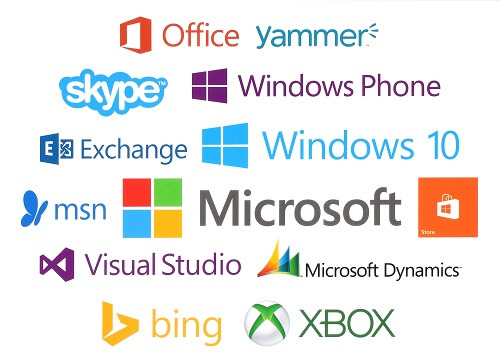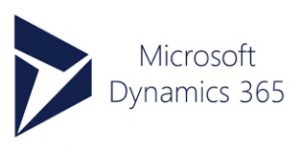 THE MICROSOFT DYNAMICS ERP FAMILY
THE MICROSOFT DYNAMICS ERP FAMILY
Looking to make a choice from the Microsoft Dynamics suite of solutions is a sound start. Microsoft invests more in Research and Development than any of its competitors, in fact more than the entire turnover of most of its competitors. Microsoft provides more information and solutions on product strategy than any competitor, including long-term road-maps for each ERP product that help customers and partners plan future investments.
 A major advantage of any product solution from within the Dynamics suite is integration with other Microsoft products such as Microsoft Office and Windows SharePoint Services.
A major advantage of any product solution from within the Dynamics suite is integration with other Microsoft products such as Microsoft Office and Windows SharePoint Services.
If in the future a business changes so that one of the other Dynamics ERP solutions becomes a better fit, Microsoft will credit the original investment against any of the other Dynamics ERP products.
The existence of the partner network makes it possible not only to choose the best product for a project but also the best partner to implement and maintain it. This means that choosing a Microsoft ERP solution represents a reduced risk across the evaluation criteria from user acceptance to future support and development.
Why there are four Microsoft ERP Solutions
Microsoft offers four ERP solutions partly by accident and partly by design. When Microsoft decided to enter the business solutions market in 2000, the company started by acquiring the market-leader for mid-range ERP in the US, followed by the market-leader for Europe.
Acquired in 2000 for $1.1 billion, Great Plains was the US solution that had previously merged with professional services software provider Solomon. These became Microsoft Dynamics GP and Microsoft Dynamics SL.
Acquired in 2002 for $1.4 billion (the largest acquisition ever made by Microsoft), Navision was the Danish solution that had previously merged with Damgaard, a fellow Danish company that developed the Concorde XAL and Axapta products. Concorde XAL was already on retirement plan so the products that were taken forward into the Microsoft fold became Microsoft Dynamics NAV and Microsoft Dynamics AX. And latterly Business Central evolved from NAV.
Please contact us for a no-obligation chat about whether Business Central is right for your organisation – we will say no if it’s not
The Microsoft Effect
A couple of curious things started to happen after the formation of Microsoft Business Solutions (the division responsible for the Microsoft Dynamics products). Firstly, while Navision had always had a US presence, the Microsoft badge meant that it became even more appealing to North American companies and sales began to soar. Secondly (and to the joy of competitors), industry commentators watched as Microsoft struggled to find a cohesive strategy for the products. The initial plan was to rewrite a new ERP solution from the ground up and then migrate the customer base. Referred to as Project Green, this was quickly abandoned, thankfully.
Microsoft has gradually worked towards standardising all aspects of its ERP solutions. All parts that were proprietary (or reliant on a proprietary product), such as the database, report writer, user interface and development language have been moved to industry standards such as SQL database (making use of SQL Server Reporting Services), .NET development language and user interfaces in line with the Office products. Some of this was already in place when Microsoft acquired the products, ERP vendors had long seen the benefit of emulating the Microsoft look and feel and leveraging technologies such as SQL
Microsoft has continued to develop the ERP products in tandem with the aim of offering end-users systems that are easy to use, easy to support and that leverage existing investments in technology.
We predict that in future, the differences between the four ERP products will become functionality only. Whether they will continue to be marketed as four different products remains to be seen but our view is that as and when Microsoft gets to the point when it is difficult to differentiate between the products in terms of technology, scale and functionality, the transition for customers will be imperceptible.
 What is the Difference between the four Microsoft ERP Solutions?
What is the Difference between the four Microsoft ERP Solutions?
Because of the way the different Dynamics ERP products have evolved, there is considerable overlap making differentiating a little difficult. For example, it used to be true to say that Dynamics NAV was benchmarked to support 300 concurrent users but there are customer sites that support 700+ and with the three tier technology initially launched with NAV 2009, scalability for Dynamics becomes unlimited.
Dynamics NAV (formerly Navision)
Business Central (BC) – formerly Dynamics NAV (and prior to that Navision) has presence in over 140 countries worldwide. It is used mainly by mid-market companies and divisions of corporations requiring a flexible ERP solution. Navision accounting software allowed partners and users to access the source code of the product in order to make changes and extend the solution. Many of these additions have been incorporated back into the core product so that NAV quickly became a fully featured ERP solution offering distribution, job control, manufacturing, service management and sales and marketing (CRM).
Further functionality is available through a wide range of add-ons, whether generic such as local payroll or industry specific such as TVision’s Bevica. As with AX and unlike GP (and most competing solutions), these add-ons reside within the database rather than being bolted-on and interfaced. NAV is the most popular Dynamics ERP solution boasting well over a million users.
Dynamics AX (formerly Axapta)
AX (formerly Axapta) was traditionally strongest in Scandinavia meeting the needs of complex manufacturing and distribution. The advanced technology of the AX product meant that it had the capability of scaling to support thousands of users. This technology has now been adapted by the other Dynamics ERP solutions and so the differentiator has been removed. Aimed at large organisations, AX is a heavy-weight solution that will take longer to implement than the other three Microsoft ERP solutions but will provide control and strict process conformity across the organisation. AX is a very powerful platform, there is less out of the box and therefore more process work required to implement it. It is generally targeted at enterprise accounts and often pitches against SAP or Oracle. AX can do almost anything but the customer should be aware of the resources necessary for its implementation. Most often, AX sites have full-time development resources and a broad IT group that has ERP, business analysis and change management capabilities.
As the youngest of the group (although sources suggest AX was conceived in 1983 it was 1996 before it began to gain recognition), AX has the smallest number of users. However, these tend to be significantly sized projects. Microsoft tends to suggest AX to companies with a high number of users (200+ typically), but in our experience, this may be based on Microsoft’s estimate of a potential client’s budget as much as the suitability of the product. In our opinion, the size of the project should not be used to exclude other products within the Dynamics suite or used to short-cut a process based evaluation.
A further confusion is sometimes added due to the constraints of the AX marketplace. Partners sometimes target smaller projects. It may be flattering for a smaller company to think it is getting an enterprise quality solution but the likelihood is that smaller companies will struggle to find the resource, both in time and money required to successfully implement AX and gain no benefit from a business process point of view.
Dynamics GP (formerly Great Plains)
GP (formerly Great Plains) is mostly used by North American and Australian companies, typically small to medium companies requiring an accounting system. GP is the “horizontal” product and as such it is a good first step for a company leaving an entry level accounting system for more advanced capabilities. Although it is deployed in manufacturing and retail environments, it does not have the out-of-the-box fit for these customers. Great Plains authorised Independent Software Vendors (ISVs) to create bolt-ons for the product (unlike NAV and AX add-ons that are truly built within the applications). Although the ISVs were accredited, the bolt-ons themselves weren’t subject to accreditation. These bolt-ons mean that you may find customers who have extended their GP system to manage distribution, manufacturing and service management. Even sales order processing in GP is managed with one of many bolt-ons. Typically a GP partner will select the bolt-ons for the client building up a system that meets the project requirements. GP has failed to make a major impact in Continental Europe, largely due to the historic weakness of its multi-currency functionality and strength of competitors like Navision. GP is the second most popular Dynamics ERP solution in terms of numbers of users after NAV.
Dynamics SL (formerly Solomon)
SL (formerly Solomon) has, rightly or wrongly, become very much a niche product with focus on project accounting. In the UK, it has enjoyed particular success in the media industry. With the original company founded in 1980, SL is the old man of the group.
Cost Comparisons Of Microsoft Dynamics ERP and the Value it can offer your Business
 Licence-wise AX is the most expensive, reflecting its positioning at the upper corporate level. It is also more complex and therefore will take longer and be more expensive to implement. GP, NAV and SL licences are very similar in price with the price per user identical, it is only choice of optional functionality that may affect the overall licence value. Microsoft is determined that the GP and NAV products should not compete on price.
Licence-wise AX is the most expensive, reflecting its positioning at the upper corporate level. It is also more complex and therefore will take longer and be more expensive to implement. GP, NAV and SL licences are very similar in price with the price per user identical, it is only choice of optional functionality that may affect the overall licence value. Microsoft is determined that the GP and NAV products should not compete on price.
Here at TVision we exclusively focus on Dynamics Business Central and Dynamics NAV and are Microsoft Certified Gold Dynamics Partners as a recognition of our Microsoft ERP expertise.
More important than price is the value an ERP implementation adds to a business. Any new implementation will require a significant budget and it is quite easy to simply end up with a shinier version of the existing solution. TVision is happy to advise on Return on Investment calculations. Without at least top level information about a potential project it is difficult to make generalised, meaningful statements on ROI that would differentiate the products.
Where a business is operating in a specific industry, such as recruitment or wine distribution, where an industry configured solution exists in one of the Dynamics products such as our Bevica then this usually makes the decision much easier.
Hopefully the outline profiles above will help to determine which of the four can be eliminated from further consideration. Often, it comes down to a choice between just a couple of Dynamics ERP options and from this point, each organisation will need to evaluate which is the best fit and best investment for them.
Equally as important in deciding the right software solution is choosing the right partner to implement it.
Other pages you may find helpful
Choosing an ERP implementation partner is an integral part of the decision process, Working with TVision describes describes our methodology and approach to providing the best return on investment for our clients.
If you would like to find out more information on the comparison of Microsoft Dynamics ERP solutions, contact us today.
